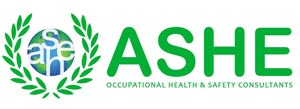Atmospheric Testing in Confined Space
Atmospheric testing is required for two distinct purposes: evaluation of the hazards of the permit space and verification that acceptable conditions exist for entry into that space.
A confined space is one that is large enough to enter and perform assigned work in; it has limited or restricted ways to enter or exit the space; and it was not designed to be occupied continuously by a worker.
Evaluation testing
The atmosphere within a confined space must be tested using equipment that is designed to detect the chemicals that may be present at levels that are well below the defined exposure limits. Evaluation testing is done to:
• determine what chemical hazards are or may become present in the space’s atmosphere, and
• identify what steps must be followed and what conditions must be met to ensure that atmospheric conditions are safe for a worker to enter the space.
The testing results and the decisions about what steps must be followed before entry must be evaluated by, or reviewed by, a technically qualified professional
The technically qualified professional must consider all of the serious hazards in his/her evaluation or review.
A permit space is a confined space that has one or more of the following features: it has or may contain a hazardous atmosphere; it contains a material that can engulf a person who enters; it has an inside design that could trap or asphyxiate a person who enters (inwardly converging walls, or a floor that slopes downward to a smaller section); or it has any other serious safety or health hazards.
Verification Testing
Before a permit space that may have a hazardous atmosphere can be entered, the atmosphere must be tested using the steps identified on the permit (developed during evaluation testing).
Verification testing is done to make sure that the chemical hazards that may be present are below the levels necessary for safe entry, and that they meet the conditions identified on the permit. Test the atmosphere in the following order: (1) for oxygen, (2) for combustible gases, and then (3) for toxic gases and vapors.2 The testing results — the actual test concentrations — must be recorded on the permit near the levels identified for safe entry.
Duration of Testing
For each test required on the permit, you must allow enough time for the air from the space to be drawn into the equipment and for the sensor (or other detection device) to react to the chemical if it is present. This is considered the “minimum response time” and it will be noted by the manufacturer in the operator’s manual.
Be aware that you will need to add time to this “minimum response time” if you have attached hosing or a probe extension to the inlet. The additional time is needed to allow the air from the different depths of the space to be pulled into the equipment inlet.
Testing Conditions in Spaces that May Have Layered Atmospheres
For permit spaces that are deep or have areas leading away from the entry point, the atmosphere may be layered or may be different in remote areas. For these spaces, testing must be done in the area surrounding the worker, which is considered four (4) feet in the direction of travel and to each side. If a sample probe is used to do the testing,then the worker must move slowly enough so that testing is completed, keeping the equipment “response time” in mind, before he/she moves into the new area.
Retesting the Space During Entry or Before Re-Entry
Test the permit space routinely to make sure that the atmospheric conditions continue to be safe for entry.
1st Floor, Suprans Arcade, Aiswarya Road, Opposite to Kaloor International Stadium, Palarivattom, 682025
Reach us on 9745126655, 8592859385

 WhatsApp us
WhatsApp us